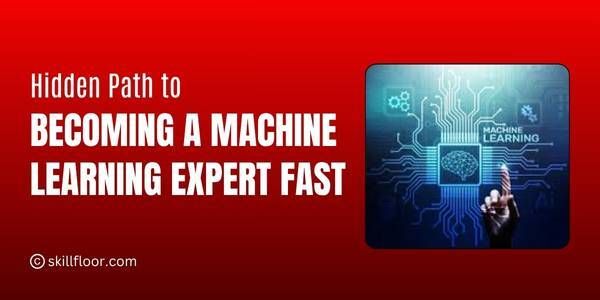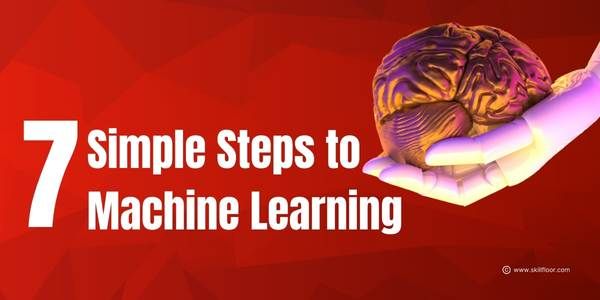Discovering Hidden Patterns: A Friendly Guide to Clustering in Machine Learning
Uncover hidden patterns with ease! Explore clustering in machine learning and unlock valuable insights. Start your journey now

Welcome to the fascinating world of clustering in machine learning! Have you ever wondered how we can group similar data points together or uncover hidden patterns within our datasets? Clustering is the key to unraveling these mysteries. In this friendly guide, we will embark on a journey to explore the concept of clustering and learn how it helps us make sense of complex data. So, let's dive in and unlock the power of clustering!
1. Understanding Clustering
Clustering is like organizing a messy wardrobe, grouping similar items together to create a sense of order. In the realm of machine learning, clustering is a technique that enables us to automatically identify similar data points and group them together based on their inherent patterns and similarities. It helps us uncover structures and relationships in our data without the need for predefined labels. By grouping similar objects into clusters, we gain insights into the underlying patterns and can make informed decisions.
2. Types of Clustering Algorithms
Clustering algorithms come in various flavors, each with its own strengths and characteristics. Two popular types of clustering algorithms are:
K-means Clustering
Imagine dividing a group of objects into k distinct clusters, with each cluster represented by its centroid. K-means clustering assigns data points to the nearest centroid and iteratively adjusts the centroids until optimal clusters are formed. It is an efficient and widely used algorithm that works well when clusters have a spherical shape and similar sizes.
Hierarchical Clustering
Picture building a tree-like structure where clusters are created by merging or splitting existing clusters based on their similarities. Hierarchical clustering can be agglomerative (bottom-up) or divisive (top-down). It allows us to explore clusters at different levels of granularity and provides a visual representation of the hierarchical relationships among data points.
3. Evaluating Clustering Results
Evaluating the quality of clustering results is like assessing the success of a puzzle-solving adventure. We want to ensure that the clusters formed are meaningful and align with our expectations. There are various metrics to evaluate clustering performance, such as silhouette score, cohesion, and separation. These metrics measure the compactness of clusters and the separation between them. By assessing these metrics, we can choose the optimal number of clusters or compare the performance of different clustering algorithms.
4. Applications of Clustering
Clustering finds applications in diverse fields, from customer segmentation in marketing to anomaly detection in cybersecurity. It helps us uncover patterns in customer behavior, group similar documents for information retrieval, identify distinct disease subtypes in healthcare, and much more. Clustering enables us to understand complex data structures, make data-driven decisions, and extract valuable insights that drive innovation and success.
5. Challenges and Considerations
Clustering is not without its challenges. Determining the optimal number of clusters, handling high-dimensional data, and dealing with outliers are some common hurdles. It's important to preprocess and normalize the data, choose appropriate distance metrics, and carefully interpret the results. Additionally, the choice of clustering algorithm and parameter settings can greatly impact the outcomes. Iteration, experimentation, and understanding the domain context are key to overcoming these challenges and obtaining meaningful clustering results.
6. Feature Selection and Representation
Feature selection and representation is like curating the perfect playlist for a road trip – it's about choosing the most relevant songs that set the right mood. In the world of clustering and machine learning, feature selection and representation play a similar role. They help us identify the most meaningful and informative features from our data, allowing us to capture the essence of the underlying patterns.
Feature selection involves carefully selecting a subset of features that contribute the most to the clustering process. Just like a playlist with your favorite songs, we want to choose the features that have the most impact on the clustering outcome. This helps in reducing computational complexity and eliminating noise or irrelevant information that might hinder the clustering process.
Feature representation, on the other hand, focuses on transforming the data into a format that is suitable for clustering algorithms. It's like translating a song into different musical instruments or genres to evoke different emotions. In feature representation, we preprocess the data, ensuring it is on a similar scale and capturing the desired characteristics. Techniques like normalization, standardization, or dimensionality reduction, such as PCA, can be applied to represent the features effectively.
7. Choosing the Right Distance Metric
Choosing the right distance metric is like finding the perfect measuring tape to gauge the similarity between data points. In the world of clustering, distance metrics play a crucial role in determining how close or far apart data points are from each other. It's like using the right tool to measure the distance between two destinations accurately.
Different distance metrics capture different notions of similarity, just as different measuring tapes may have varying units or scales. For example, the Euclidean distance measures the straight-line distance between two points, giving us a sense of spatial similarity. On the other hand, the Manhattan distance considers the sum of the absolute differences between the coordinates, capturing a notion of distance based on city block movements.
Choosing the appropriate distance metric depends on the nature of the data and the problem at hand. It's like selecting the right measuring tape for the specific task you're working on. For example, if you're clustering images, you might consider using a distance metric that accounts for the differences in pixel intensities. If you're working with categorical data, you might opt for a distance metric that captures the dissimilarity between different categories.
8. Handling Large and High-Dimensional Data
Clustering large datasets or datasets with high-dimensional features can be computationally challenging. In such cases, dimensionality reduction techniques like Principal Component Analysis (PCA) or t-distributed Stochastic Neighbor Embedding (t-SNE) can be applied to reduce the data's dimensionality while preserving its structure. This facilitates faster and more efficient clustering without sacrificing important information.
9. Exploring Cluster Interpretability
Interpreting and understanding the meaning behind the generated clusters is essential for practical applications. It involves analyzing the characteristics and properties of the data points within each cluster. Visualization techniques, such as scatter plots or heatmaps, can aid in visualizing the clusters and identifying distinctive patterns. Domain knowledge and context are valuable in interpreting the clusters and extracting meaningful insights.
10. Iterative Refinement and Validation
Clustering is an iterative process that often requires refinement and validation. It's important to assess the stability and robustness of the clusters by testing the algorithms with different parameter settings or utilizing ensemble methods. Additionally, external validation measures, such as external indices or expert judgment, can help evaluate the quality and relevance of the generated clusters
Clustering is a powerful technique that allows us to organize, explore, and extract knowledge from complex datasets. By uncovering hidden patterns and grouping similar data points, clustering opens doors to new insights and opportunities. Whether you're analyzing customer data, exploring genetic information, or segmenting images, clustering is a valuable tool in your machine learning toolkit.



























































